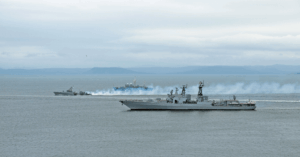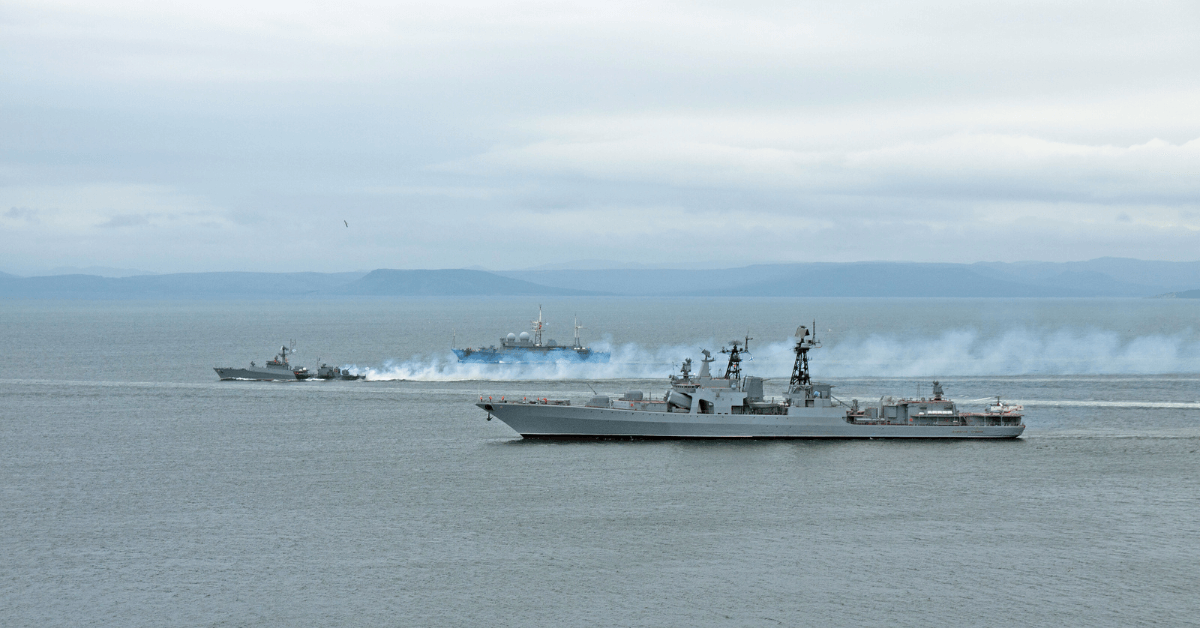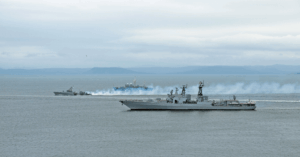
World’s First Capital Partner For Shore Power Launched To Help Ports Go Green
May 27, 2025
LNG Market Downturn Forces Owners To Scrap Aging Fleet; 60 Carriers Remain Idle
May 27, 2025

Russia has started sending naval ships to escort tankers from its shadow fleet through the narrow Gulf of Finland, Finland’s Defence Minister confirmed.
Finland’s Defence Minister Antti Häkkänen said during a televised appearance on national broadcaster YLE that Russia is now deploying its military to protect oil tankers sailing through the Gulf of Finland.
Häkkänen called it something that has never happened before and said it shows growing tension in the area. This announcement came just a day after the Finnish Ministry of Defence reported that two Russian military aircraft had entered Finnish airspace without permission on May 23. The Finnish government confirmed that the suspected violation is under investigation and is being taken seriously.
The military escorts appear to be Russia’s response to recent actions by the European Union and the United Kingdom to crack down on the transportation of Russian oil using a network of tankers commonly referred to as the “shadow fleet.”
These vessels often operate under flags of convenience, are poorly maintained, and lack proper insurance. Many of them also use deceptive tactics to conceal the origin of their cargo, including turning off tracking systems (AIS), providing false ship data, conducting ship-to-ship oil transfers, and changing names and registries frequently.
One such example is the tanker involved in a standoff with Estonian naval forces on May 13. The vessel, then named Jaguar and registered in Gabon, refused to stop for inspection.
During this standoff, a Russian fighter jet entered Estonian airspace, possibly in an attempt to protect the tanker. Just a month earlier, in April, Estonia had detained another suspected “stateless” oil tanker for several days.
AIS tracking data revealed that the Jaguar departed from the Russian oil terminal at Primorsk on May 25, now sailing under a different name, Blint, and registered in Comoros. This is the third identity change for the same tanker in just five months. It began the year as Argent, changed to Jaguar, and has now taken on the name Blint.
Russia has strongly criticised the inspection efforts led by Estonia and supported by the EU. Vassily Nebenzia, Russia’s Permanent Representative to the United Nations, referred to the actions as “Baltic piracy” and accused the EU of violating international norms by encouraging such behavior. Dmitry Peskov, spokesperson for President Vladimir Putin, added that Russia would take all necessary steps to defend its vessels.
The increased Russian military activity in the Baltic comes as new EU sanctions target tankers suspected of transporting Russian oil in violation of the G7-imposed price cap. In response, the UK also imposed sanctions on several vessels in recent weeks. However, these measures have not stopped Russian crude exports entirely.
The EU has also introduced new rules allowing member states to inspect vessels transiting their waters even if those ships do not plan to dock at any EU port.
Estonia’s Defence Ministry has declared that it will continue inspecting suspicious ships to protect the region’s safety and environment from uninsured and potentially dangerous vessels.
The EU and G7 have set a price limit on Russian oil to cut its profits. Right now, the cap is $60 per barrel, but the EU may lower it to $50. Ukraine wants it reduced even further to $30. However, many still question whether the cap is really working.
According to a recent study by the Centre for Research on Energy and Clean Air, a Finland-based think tank, sanctions targeting the shadow fleet might be more successful than the price cap alone. The study reported a drop in the use of shadow fleet tankers for Russian oil exports, from 81% in January 2025 to 65% in April.
References: OilPrice, defensemirror
Source: Maritime Shipping News


